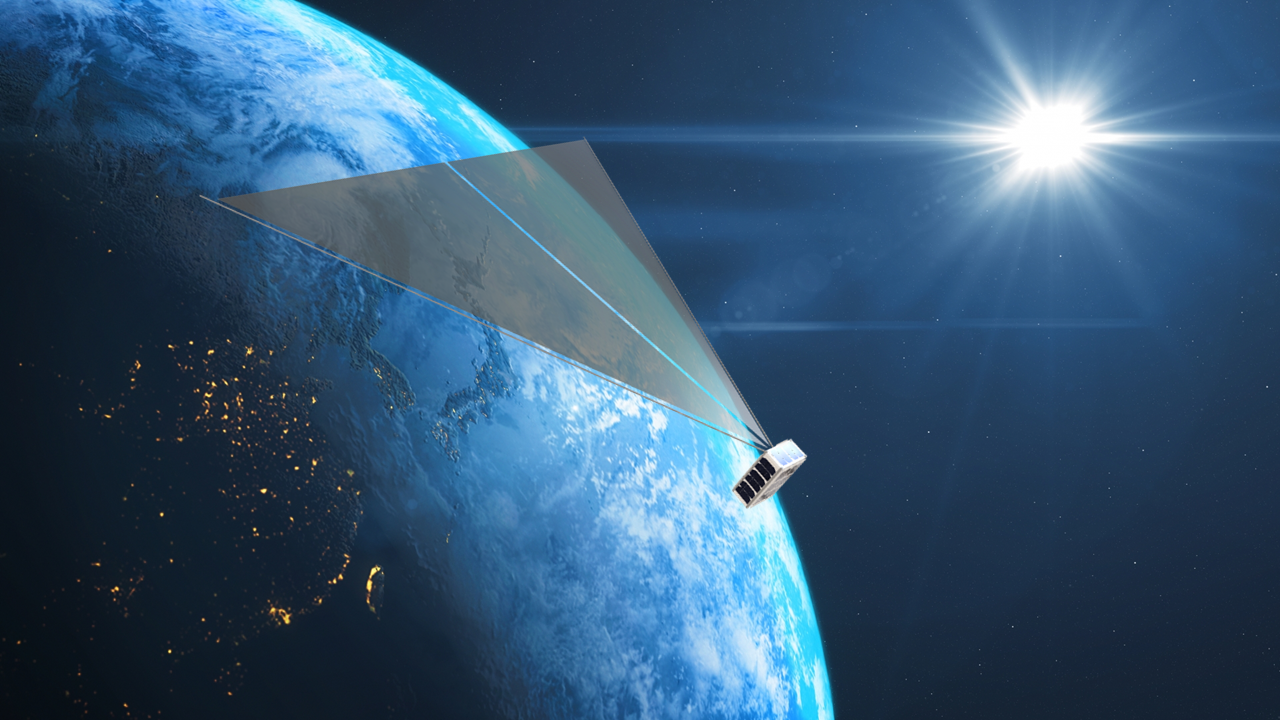De-orbit Device
cosmobloom is developing one of the world’s smallest membrane-type deorbit devices that can be mounted on ultra-small satellites such as 3U and 6U, based on our unique analysis technology.

The smallest membrane-type deorbit device
Various deorbit devices have been considered in the past, but their deployment has often been hindered by mission barriers due to issues with size and mass when stowed, particularly affecting the proliferation to CubeSat-class satellites, which have limited resources.
The deorbit device currently under development is small enough to fit into a volume of 81mm x 96mm x 25mm when stowed, achieving a size (0.25U) that does not hinder the mounting of mission equipment on CubeSat. Despite being one of the smallest in the world in terms of stowed volume, it can deploy an area of 2.86 square meters. This deployment area is sufficient to send CubeSat of sizes like 3U or 6U into a disposal orbit without depending on solar activity.
Additionally, past deorbit devices of 0.25U size featured a square deployment shape, which posed constraints on their positioning when attached to the satellite body. In contrast, the deorbit device currently under development employs a triangular deployment shape, allowing for more flexible mounting options.
Why are de-orbit devices necessary?
As the global utilization of space accelerates, various operators are actively working towards realizing low Earth orbit satellite constellation projects. While this activity has the positive aspect of creating new services utilizing space, it also has the negative side effect of increasing space debris.
Space debris refers to defunct satellites, malfunctioning satellites, upper stages of rockets, parts released during missions, and fragments produced by explosions or collisions. The increase in constellation projects implies more rocket and satellite launches, which, as a result, leads to an increase in space debris.
The issue with space debris primarily arises from the potential for collisions with operational satellites and rockets. It would be counterproductive if operational satellites were to collide with space debris and malfunction. Additionally, collisions between pieces of space debris can lead to an exponential increase in debris, posing a threat that could potentially make future space activities unsustainable. This makes it an issue that cannot be ignored.
To solve this problem, it is crucial to reduce and prevent the creation of debris. The deorbit device we are developing is essentially a tool designed to prevent the generation of debris. It is intended to be installed on newly launched satellites and utilized as they approach the end of their operational life. By using the deorbit device, satellites can autonomously move to a disposal orbit, thus preventing the creation of space debris.

出典:JAXA
